Skype: neodalle-travel
Tel: +86 135 7447 2266
E-mail: sales@visitaroundchina.com

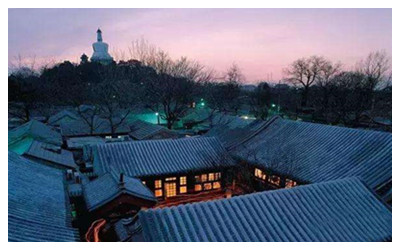 Siheyuan (Courtyard)
Siheyuan (Courtyard)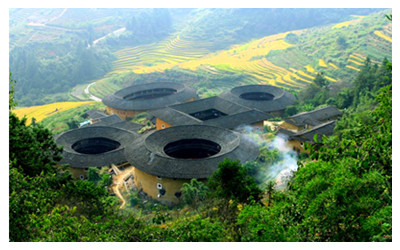 Tulou ( Earth Building)
Tulou ( Earth Building)
Tulou means 'earth building'. It is named from its outer walls, which are made from rammed earth. Generally speaking, the large multi-storey Tulou was seldom seen in the areas where early Hakka lived. However, they are appeared in the perimeters of Hakka and other ethnic groups or around locations where Hakka fast developed after Ming and Qing dynasties. The Tulous in the Fujian Province are divided into three types, Wufeng, Rectangular, and Round. Wufeng are located mainly in Yongding, and rectangular and round Tulou are distributed in Nanjing, Pinghe, Zhao’an West and Yongding East. In most of the villages, round and rectangular tulous are mixed together. Among three kinds of Tulous, the rectangular Tulous were the original ones.
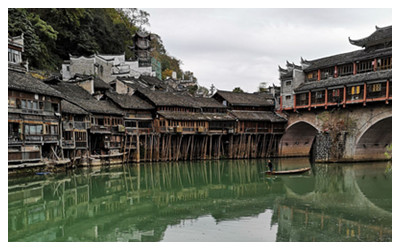 Stilted Dwelling (Diaojiaolou Dwelling)
Stilted Dwelling (Diaojiaolou Dwelling)
A common traditional dwelling for Miao, Zhuang, Bouyi, Dong, Shui and Tujia minority people, stilted dwelling or Diaojiaolou dwelling can be found in Southeast Chongqing, West Hunan, West Hubei and the southeast of Guizhou Province. Diaojiaolou dwellings are usually built against the mountain and alongside the river, facing the east or west. It belongs to the semi-stilt style architecture.
Stilt House in Fenghuang Dehang Miao Village
Biancheng Ancient Town Furong Ancient Town
Shiyanping Tujia Village Tujia Ethnic Customs Park
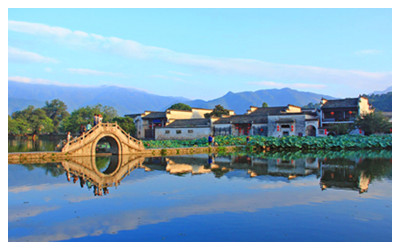 Huizhou-syle Dwelling is popular in south Anhui Province and north Jiangxi Province.Their townscapes are developed in harmony with the natural environment, using the geomantic principles of Feng Shui. Therefore, most ancient villages are set up against mountains and facing waters. It is believed to bring good luck to all villagers. In fact, this brought about convenience both to living and to farming for the villages. Furthermore, the village is segmented by winding and narrow lanes. The Huizhou-style Dwelling is the predominant architecture in the villages: white walls, dark tiles, horse-head gables, stone drums or mirrors and open interior courtyards are common features.
Huizhou-syle Dwelling is popular in south Anhui Province and north Jiangxi Province.Their townscapes are developed in harmony with the natural environment, using the geomantic principles of Feng Shui. Therefore, most ancient villages are set up against mountains and facing waters. It is believed to bring good luck to all villagers. In fact, this brought about convenience both to living and to farming for the villages. Furthermore, the village is segmented by winding and narrow lanes. The Huizhou-style Dwelling is the predominant architecture in the villages: white walls, dark tiles, horse-head gables, stone drums or mirrors and open interior courtyards are common features.
Nanping Village Tangmo Ancienrt Village
Xidi Ancient Town Huncun Village
Chengkan Village Qiankou Village
Huangling Ancient Village Wuyuan
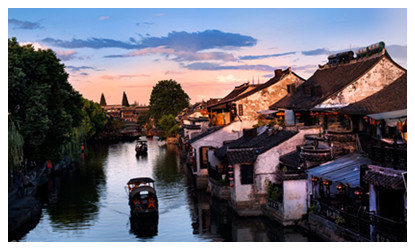
Shanghai Shikumen dwelling
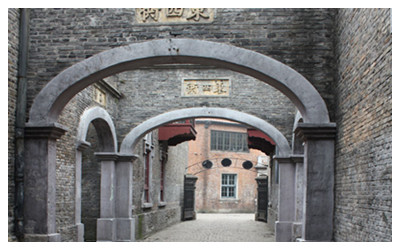 The traditional dwelling in Shanghai, Shikumen houses can still be found in the old longtang alleys. Originated in the period of the Taiping Revolution (1851 - 1864), Shikumen dwelling was the major residential style in Shanghai until 1920s, when it began to absorb the Western architectural features. Shikumen dwelling has much in common with the Jiangnan dwelling, but with stone gate frame and black thick solid wood gate, hence the name Shikumen (Stone Gate).
The traditional dwelling in Shanghai, Shikumen houses can still be found in the old longtang alleys. Originated in the period of the Taiping Revolution (1851 - 1864), Shikumen dwelling was the major residential style in Shanghai until 1920s, when it began to absorb the Western architectural features. Shikumen dwelling has much in common with the Jiangnan dwelling, but with stone gate frame and black thick solid wood gate, hence the name Shikumen (Stone Gate).
Shanxi Folk Houses
Shanxi folk house is the representative of traditional dwellings in North China. Pingyao Old Town retains its original look dating back to Ming and Qing dynasties, and perfectly keeps over 400 dwelling houses, which were listed as World UNESCO Cultural Heritages in 1997. Qiao Family Courtyard near Pingyao is the most famous Shanxi style folk house and known as a Shanxi folk museum.
 Ask Questions ?
Ask Questions ?